About SCOPE
About
In the Satellite-based observations of Carbon in the Ocean: Pools fluxes and Exchange (SCOPE) project, funded by the European Space Agency (ESA), we bring together an international team of experts to study the ocean carbon cycle from space to provide the best possible characterisation of the ocean carbon budget from satellite observations and further the understanding of its variability in space and time. We focus on producing climate-quality datasets, including error estimates, and on collaboration between remote sensing scientists, in situ data experts and biogeochemical modellers to advance our capability of monitoring the ocean carbon cycle.
The pools of carbon in the ocean that can be derived from remote sensing observations include Dissolved Inorganic Carbon (DIC), Dissolved Organic Carbon (DOC), Particulate Organic Carbon (POC), including Phytoplankton Carbon (PC), and Particulate Inorganic Carbon (PIC), while the fluxes of carbon include Primary Production (PP), Export Production (EP), and the air-sea CO2 and land-sea exchanges (Figure 1). Recent studies have reviewed the current capabilities of Earth Observation to monitor these pools, fluxes and exchanges of carbon in the ocean, including the level of maturity of the satellite-based algorithms and models and the applicability in monitoring the solubility, physical and biological carbon pumps from space (Shutler et al. 2019, 2024; Brewin et al. 2021, 2023). We have drawn on these reviews to assess the current state-of-the-art and indicate where SCOPE will target further development of satellite-based ocean carbon products to provide a budget estimate and improve our understanding of the processes underpinning the ocean carbon cycle.
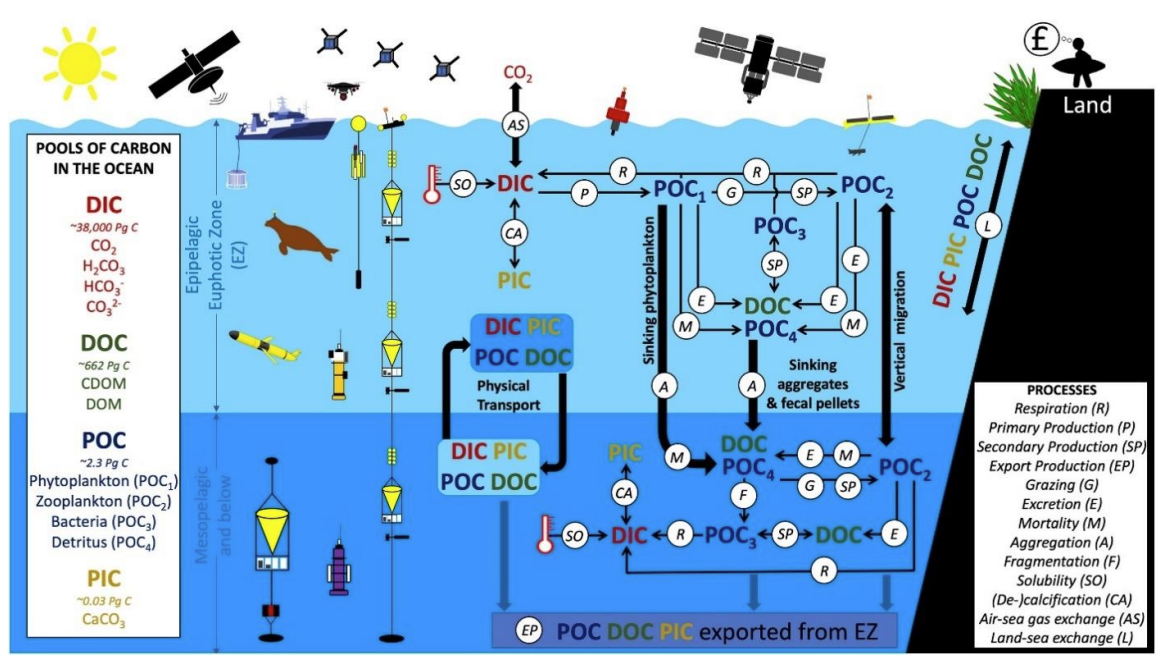
This figure provides an overview of the ocean biological carbon pump (OBCP), including pools, fluxes, exchanges, and monitoring methods. Key export pathways and interactions with land and atmosphere are highlighted in bold black text and thick arrows. Global stocks of carbon pools (DIC, DOC, POC, PIC) are presented in a box on the left, each represented by a different colour. Figure from Brewin et al. (2021), this figure builds on earlier work from CEOS (2014) and NASA EXPORTS (Siegel et al., 2016).
Objectives
of all ocean carbon pools and fluxes that is harmonised in space and time. A combination of empirical modelling and machine learning approaches will be used to further develop less mature products, including air-sea CO2 exchange and surface ocean carbonate chemistry, interior dissolved inorganic carbon and carbonate chemistry, land-sea exchange and coastal carbon, dissolved organic carbon, phytoplankton carbon, primary production and export production.
for each individual component of the ocean carbon cycle and in the carbon budget when multiple products are considered in relation to one another. Per-pixel uncertainties will be generated by using the bias and RMSD and/or standardised frameworks like the GUM following a Monte Carlo approach, while a multi-product uncertainty analysis will be carried out to identify dispensaries and to ensure consistency between products.
with its uncertainties, at climatological and annual time scales using an integrated approach in which in situ observations, data assimilation, modelling and machine learning will be used to constrain the budget as well as extrapolating surface observations from depth. A schematic diagram quantifying the individual components of the ocean carbon budget will be generated.
in the ocean carbon budget in space and time, based on a scientific analysis using the developed products and their uncertainties. Key scientific questions will be addressed, including the role of biology and the relative strength of the different carbon export processes.
in close collaboration with the modelling community, to help reduce the discrepancies between models and observations. The next steps to bring satellite observations closer to models will be defined as part of an impact assessment.
to bring the scientific community and relevant stakeholders together to present the project results and to gather recommendations
for future activities.
in close collaboration with the modelling community, to help reduce the discrepancies between models and observations. The next steps to bring satellite observations closer to models will be defined as part of an impact assessment.
among the scientific community and the general public to maximise the impact of the project, by publishing in high-ranking peer-reviewed journals and by carrying out promotion, communication and education activities.
Affiliated projects
SCOPE works closely together with the following ESA-funded projects:
Biological Pump and Carbon Exchange Processes (BICEP) – www.bicep-project.org
Ocean Carbon for Climate (OC4Climate) – mid 2024
The Team
From the depths of the ocean to the vast expanse of space, a remarkable team of minds is unravelling the mysteries of the ocean carbon cycle. This diverse group, known as the SCOPE project team, brings together scientists from across the globe, each wielding their unique expertise: Earth Observation scientists, oceanographers, data analysts, modellers, and more. Their shared mission? To unlock the secrets hidden within satellite observations, painting a clearer picture of how much carbon the ocean holds and how it changes over time.
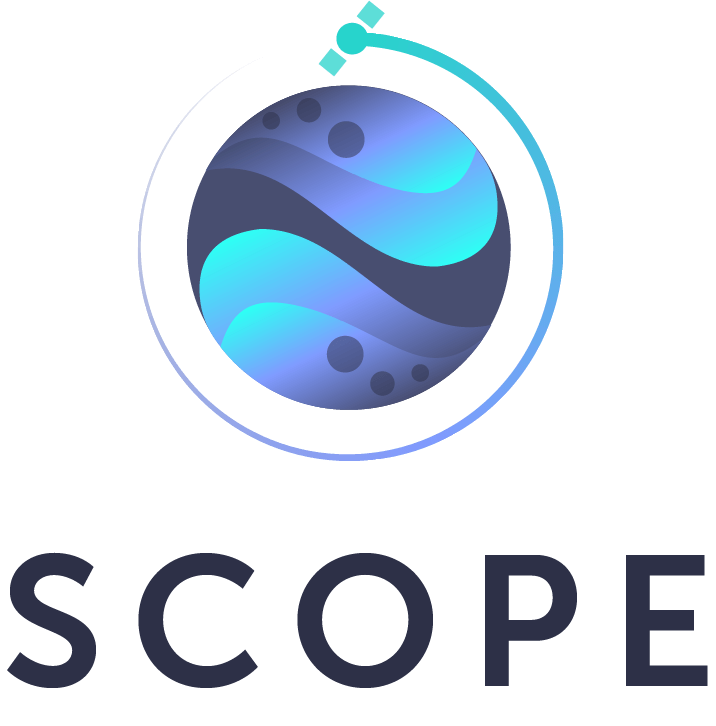
Latest Updates
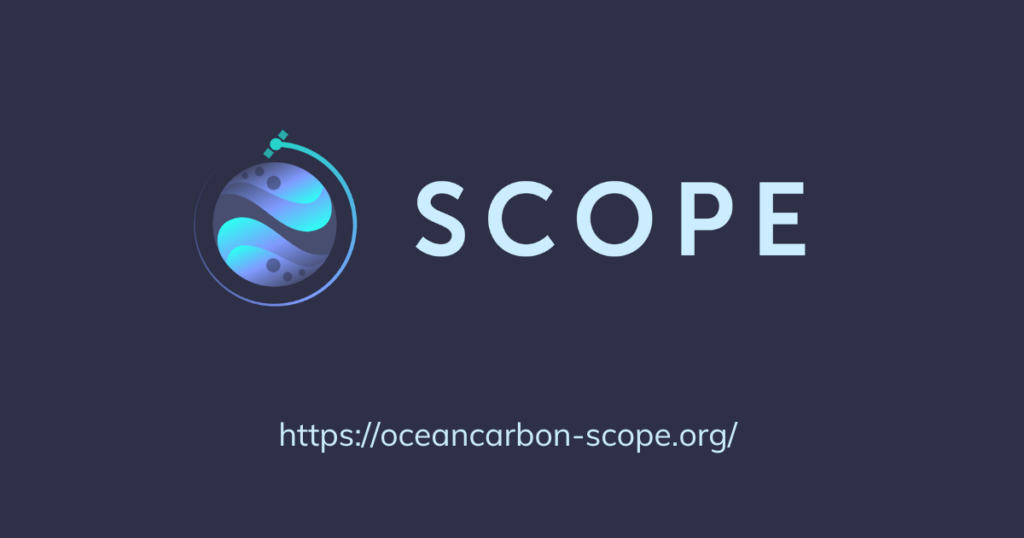
SCOPE contribution to the Global Carbon Budget 2025
We’re pleased to share that the SCOPE project has been acknowledged in the upcoming Global Carbon Budget 2025, recognising our contribution to advancing global understanding of the ocean carbon cycle.
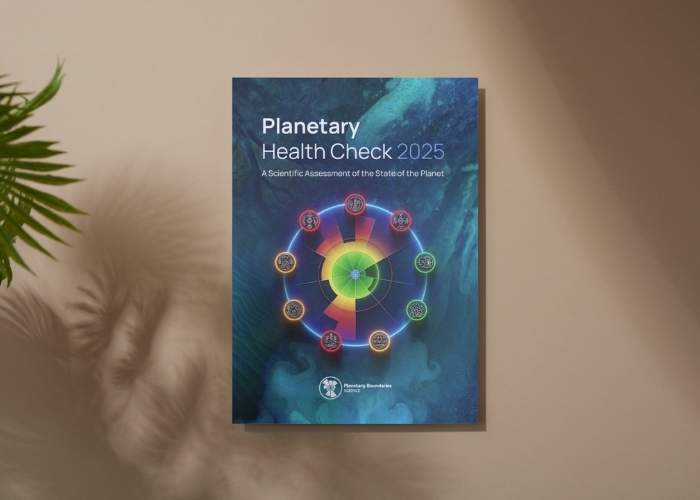
SCOPE Data Highlights Ocean Acidification in Planetary Health Check 2025
The newly published Planetary Health Check 2025 brings into focus the state of our planet’s life-support systems
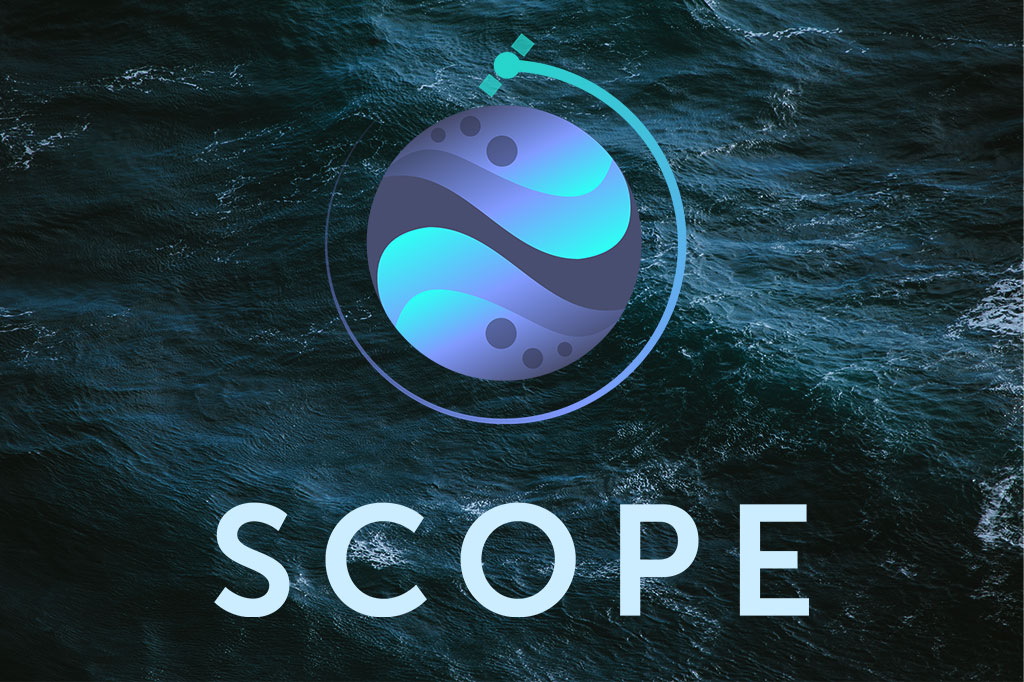
Ocean Carbon from Space Workshop 2025
Coordinated by the ESA-funded SCOPE project (Satellite-based observations of Carbon in the Ocean: Pools, Fluxes and Exchanges). Dates • Online: 24–26 November 2025 • In-person:
